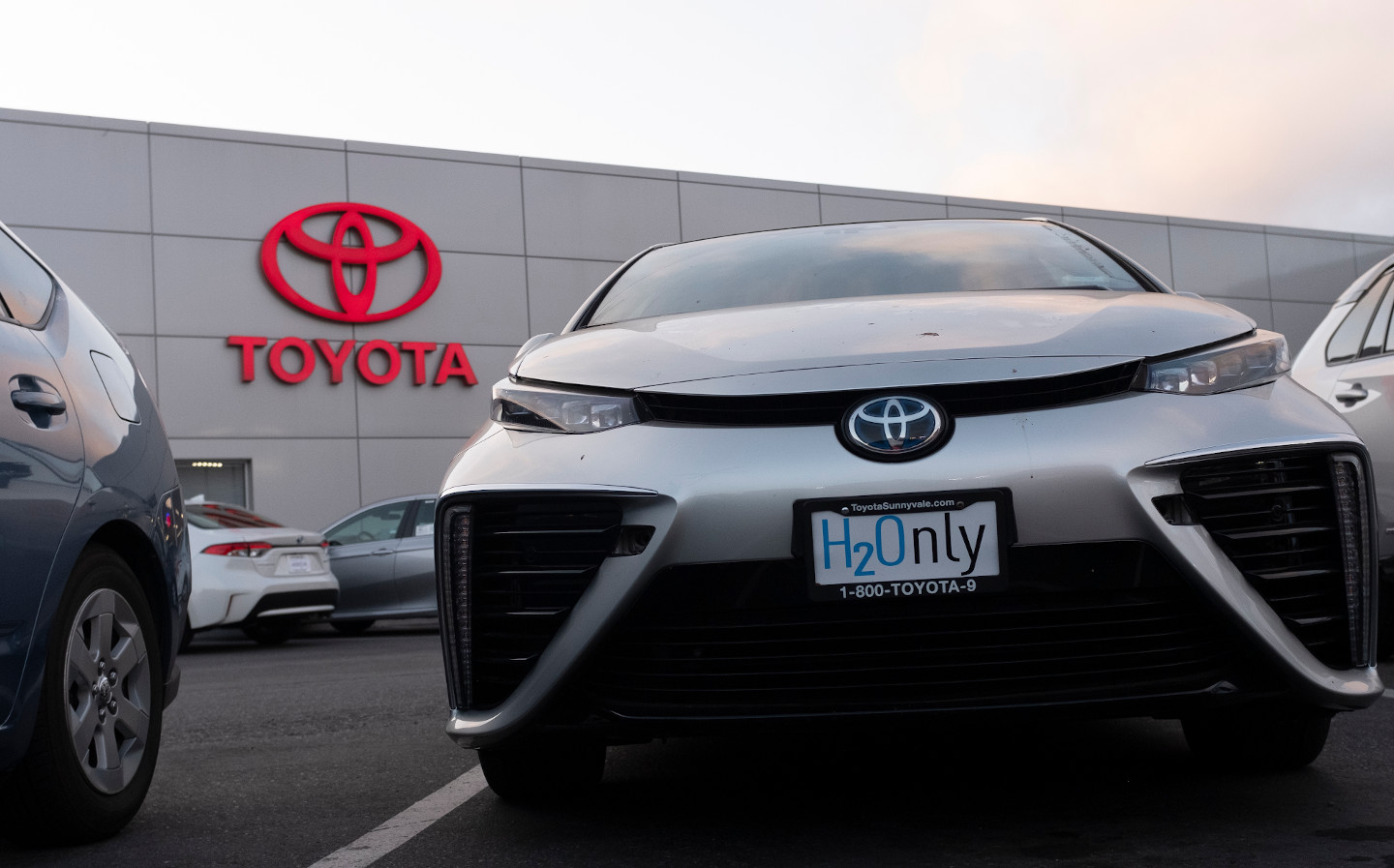Toyota partners with Chinese companies to produce hydrogen fuel cells
Country aims to have 1m hydrogen cars on roads in a decade
TOYOTA is intensifying its efforts to make zero-emission (other than water) hydrogen-powered vehicles a commercial viability by partnering with five Chinese companies to create fuel cells.
The company comprising the six entities will be called, rather un-thrillingly, United Fuel Cell System R&D (FCRD), and will be 65% owned by the Japanese car maker. It will launch with an initial investment of ¥5bn (£36.6m), according to Bloomberg.
The move is part of a bigger push in China to get a million hydrogen fuel-cell vehicles (FCVs, or FCEVs) onto its roads in the next decade. However, the Asian juggernaut has some way to go, with the number of FCVs predicted to only hit 5,000 next year. The population of China is 1.4bn.
FCRD aims to develop economically and environmentally-friendly fuel cells, as well as improving the technology’s fuel efficiency, drive performance and robustness. Toyota is undertaking the endeavour alongside Beijing Automobile Group Co., China FAW Corp., Beijing SinoHytec Co., Dongfeng Motor Corp. and Guangzhou Automobile Group Co. Two of the companies, FAW and Dongfeng, are government-owned.
Operating Officer of Toyota, Shigeki Terashi, said: “FCRD is a company that holds tremendous significance for Toyota’s global FC strategies. There is no other automobile market with such a sense of speed, and I am extremely confident that we will gain partners we can work with toward the shared target of expanding the use of FCEVs in China.”
Toyota has set itself apart for its willingness to invest in FCVs, which for more than two decades have been touted as the cars of the future. Jeremy Clarkson is a long-time advocate of fuel cell tech.
However, the only models that are thought to be available in the UK are the Hyundai Nexo, Toyota Mirai and Honda Clarity, of which the Nexo is the only one to appear on its manufacturer website with the option to book a test drive — last year the company told Driving.co.uk the Nexo is available to order with delivery taking three-to-four months. None of the cars are available to order online, and the Clarity isn’t currently included on Honda’s new cars page. The Society of Motor manufacturers and Traders doesn’t publish figures for hydrogen car sales but data obtained by The Sunday Times in 2017 showed that 10 hydrogen fuel cell cars were registered in the UK in 2016.
Like most car makers, Toyota has hedged its bets regarding future powertrains. Although it hasn’t jumped onto the pure-electric train in the same way as some of its counterparts, it has focused heavily on petrol-electric “self-charging” hybrids, starting with the Prius way back in 1997, and has maintained an interest in hydrogen. Last year the company announced that it would increase the production of its hydrogen-powered Mirai by tenfold when the second generation of the saloon enters production later this year. It has also applied hydrogen tech to heavy-duty trucks and even a moon buggy.
Meanwhile, though, sales of pure-electric (plug-in) cars been accelerating. Although the 37,850 registrations of pure-electric cars represented only a 1.5% share of the total market last year, sales were up 155% on the year before, and so far in 2020 sales are up 131% again. That’s despite the coronavirus lockdown, which has seen an overall drop in sales of 51.4%, with diesel down a massive 66%.
Sales may be further boosted by the government, as it is reportedly considering a scrappage scheme giving EV buyers £6,000 off the price of their new car when they relinquish their old petrol or diesel model.
There are undeniable advantages to hydrogen fuel cell technology, including reduced weight and faster refuelling versus battery-electric, making them (at present) highly suitable for long-distance travel methods such as planes, or public transport with set routes and timetables.
However, critics point out that producing and compressing hydrogen gas requires energy from the grid — assuming it’s clean energy, that electricity may as well be stored in battery vehicles. The hydrogen gas may also require transportation to refuelling stations, of which there were just 10 in the UK in June 2019. The latest map from h2stations.org shows 17 now in operation. Hyundai says to make the most of its Nexo, customers should ideally live within 15 miles of a refuelling station.
Expanding the network will require huge investment. In 2018, the government’s Office for Low Emission Vehicles (OLEV) announced the second stage of its £23m Hydrogen Transport Programme, with a proportion of £14m allocated to the funding of 10 new hydrogen filling stations. The previous phase saw £8.8m go towards four new refuelling stations and the upgrade of five existing stations.
Tweet to @KieranAhuja Follow @KieranAhuja
Hyundai: Plug-in electric cars are ‘quick fix’ but hydrogen must be part of future
Government considers £6,000 scrappage scheme for electric car buyers





